How do you like your Filet?
There is debate as to the exact definition of “rare,” “medium rare,” “au point,” etc. A little practice will help you learn just exactly what temperature achieves your preferred appearance of doneness.
Here are some basic temperature setting guidelines:
Rare: 129 F/54 C.
Medium rare: 135 F/57 C
Medium: 140 F/60 C.
Medium well: 150 F/66 C.
Well done: 165 F/74 C.
Serves 1
Level of difficulty: 2.75
Procedure:
Set the sous vide bath to the temperature that most closely matches your preference. Most chefs try to arrive at an internal temperature of approximately 129 F/54 C. This is much easier to do using sous vide than by conventional methods.
Stage each filet into a dedicated vacuum bag. Seal and sous vide process at the temperature best suited to your preferences for a minimum of two hours. If you want to process several steaks at different degrees of apparent doneness, visit HERE.
For enthusiasts who like their steaks extremely rare, they can be processed at temperatures as low as 122F /50 C; However, in this case the steaks will not achieve pasteurization, so the processing time MUST be limited to 2 HOURS in order to meet USDA standards of food safety. The steaks should then be served immediately, just as one would if sous vide were not being utilized.
Once your filet(s) are processed, you can season, sear and serve right away if you so prefer. I recommend letting them sit at room temperature for no more than 15 minutes so the surface can cool off a little. This prevents the internal temperature of the steak from exceeding the original target temperature. If you would like to serve the more elaborate presentation displayed in this recipe, be sure to read the next steps BEFORE you process the steaks.
Finishing and Presentation:
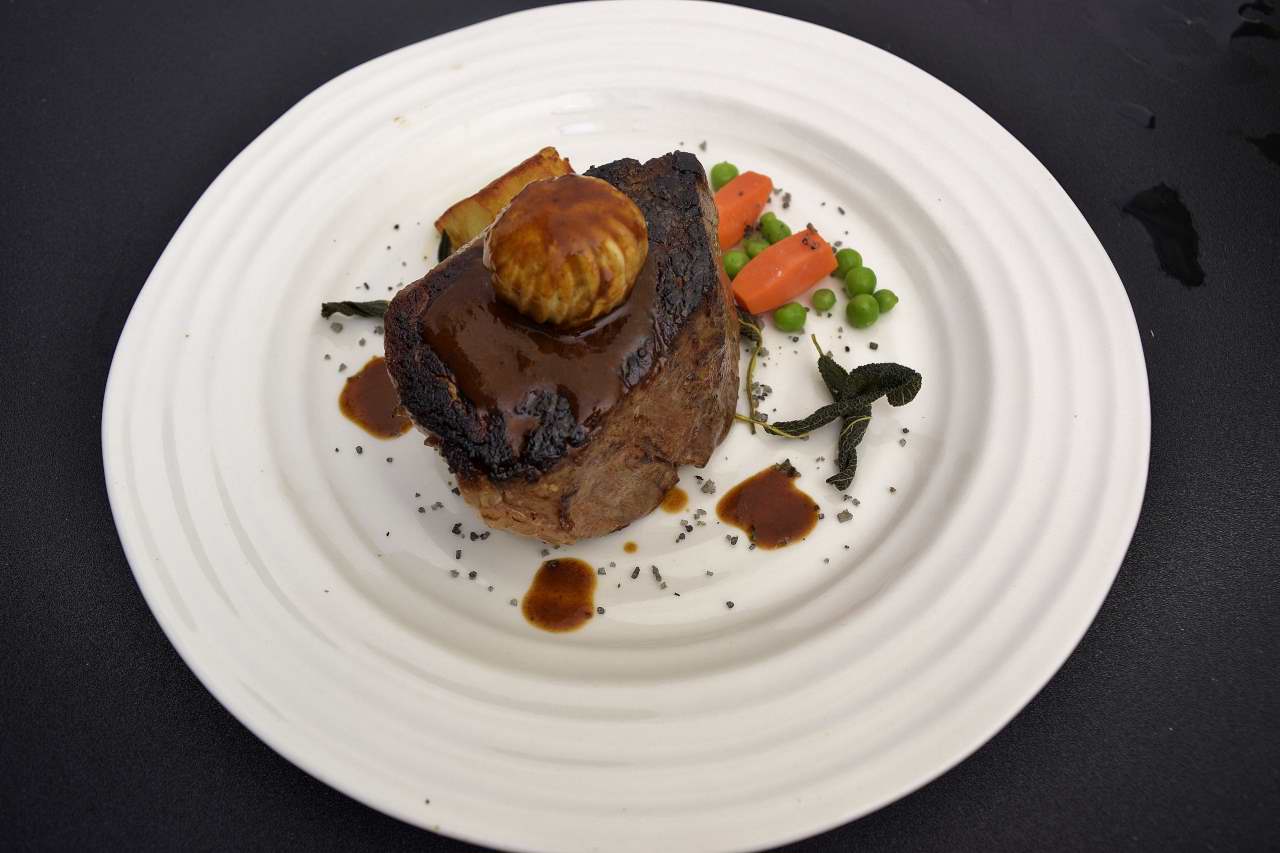
NOTE: If you want to do something like the presentation above, make sure you have completed the recipe for the mille-feuilles potatoes first. Reduce the Pinot Noir with the Espagnole until you have one cup/200 ml. This can be put in a squirt bottle. Saute one whole mushroom in a little butter until it softens and darkens. Add the carrots and peas just to heat.
Heat the plate (or plates) in a 190 F/88 C oven–this is very important. Hot plates give you more time to create a deliberate presentation. Restaurants always use hot plates and one of the large chains takes great pride in how hot their plates are–they usually arrive to the table sizzling.
Sprinkle the black salt on the plate. Arrange the crispy sage leaves and the rest of the components on the plate except the mushroom, the sauce and the filet. Return to the oven if possible.
Remove the steak from the bag and pat dry. Sprinkle the steak with the salt and pepper on all sides. Drizzle or spray with a little oil–this avoids the oil burning as a result of being added to the pan/grill. Sear the steak on high heat. The surface of the pan should be approximately 375 F/190 C. Avoid moving or excessively flipping the steaks–each surface should touch the pan only once to avoid cooling the pan and overcooking the steak. This process usually takes about one minute to darken all sides. Remove from heat and coat the steak with a little butter, allow to rest for two minutes.
Place the steak on the plate, crown with the mushroom, and drizzle the sauce as shown.
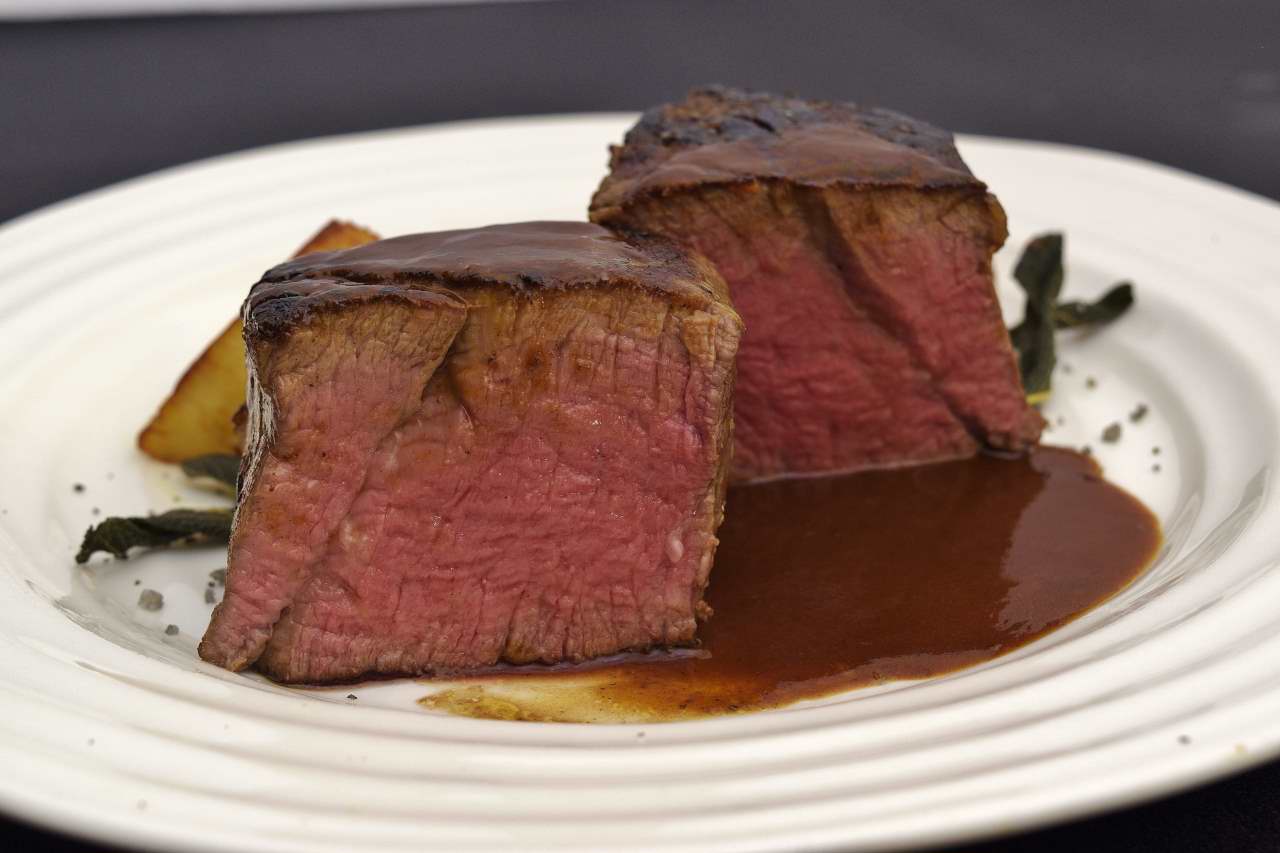
You can see the uniform appearance of doneness throughout the steak. This is almost impossible to achieve by traditional means. This is one of many favorable features of the sous vide process. No matter how you like your steak, this principle applies. It is no longer necessary to “burn” a steak just to achieve a well done appearance–sous vide does that for you!
We did another similar but slightly different version of the same tenderloin cut below.

This model utilizes the same procedure as the first one except for the addition of the creamed greens. To make them, you sprinkle the fresh greens with a pinch of salt, wrap in a paper towel and vacuum. Wait fifteen minutes for the greens to cure and drain into the towel.
Combine the cream and the butter in a thick-bottomed skillet and bring to boil. Allow to simmer for up to one minute to fully emulsify. Add the greens but do not boil again. Slice one mushroom and saute it separately. Be sure you have your potatoes ready and proceed to arrange all the components on the hot plate except for the filet and the sauce.
Sear the steaks as explained above, and proceed as pictured. Cut the steak in half to reveal the level of doneness.
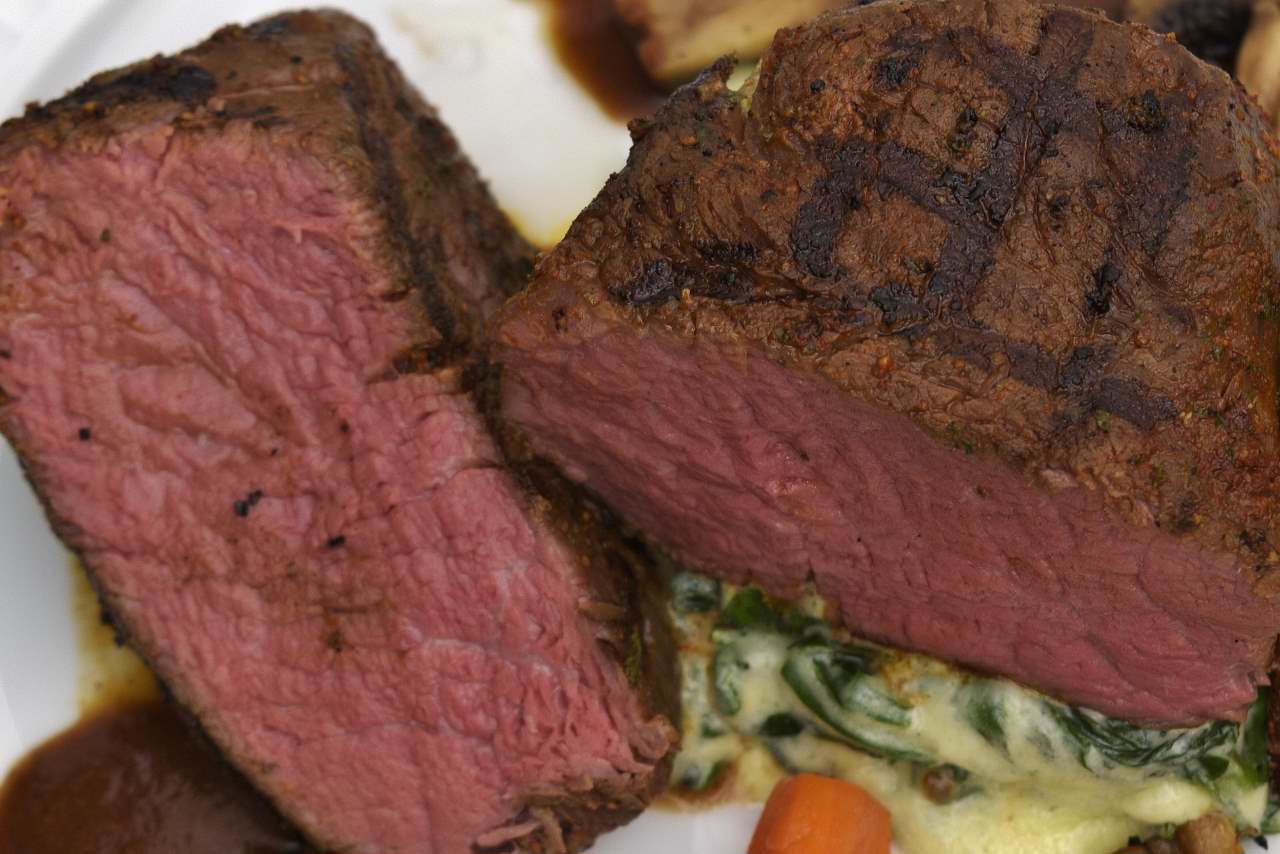
Again, you can see the uniform appearance of doneness that sous vide gives you.
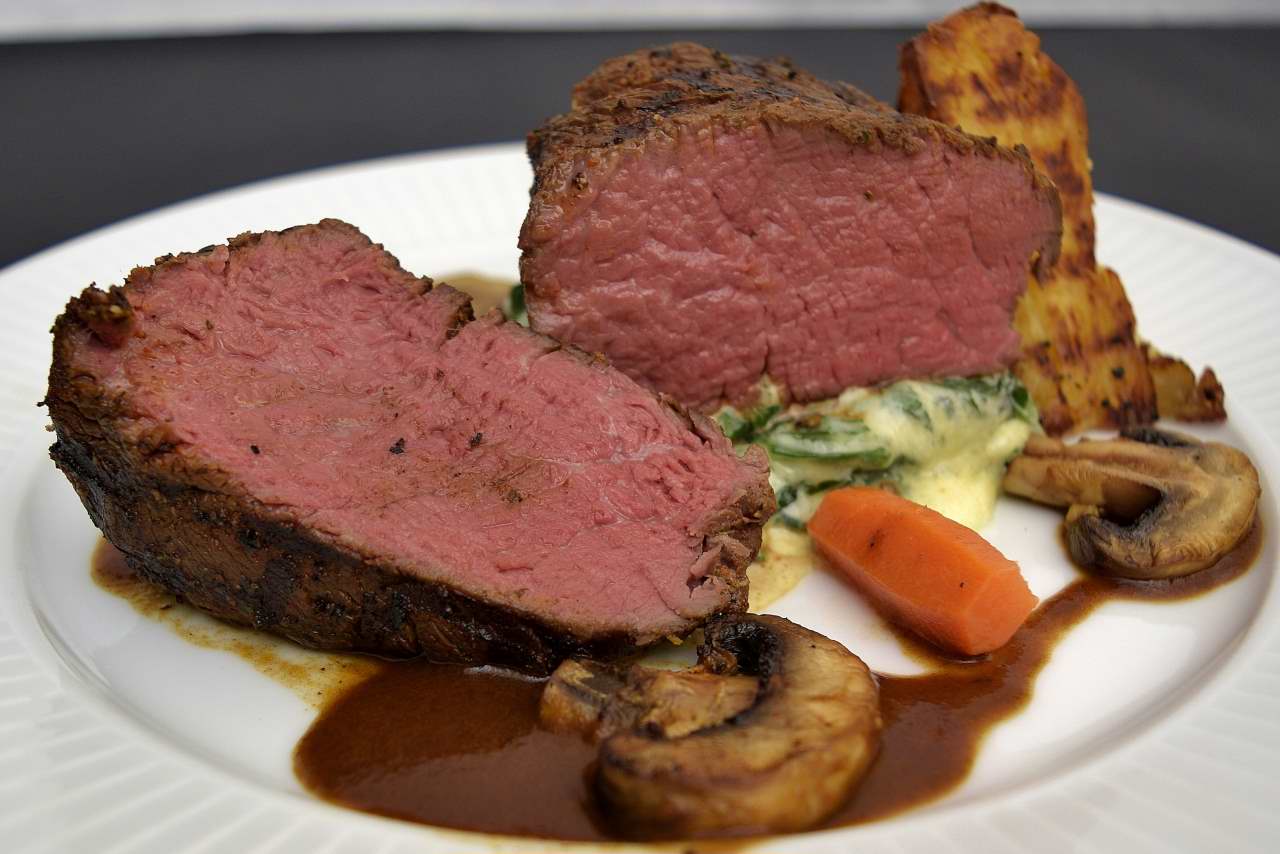
For me, this is about as good as it gets! It is worth taking that little extra time and putting forth the effort to create a simple but eye pleasing presentation–even when you are only cooking for yourself!
Norm
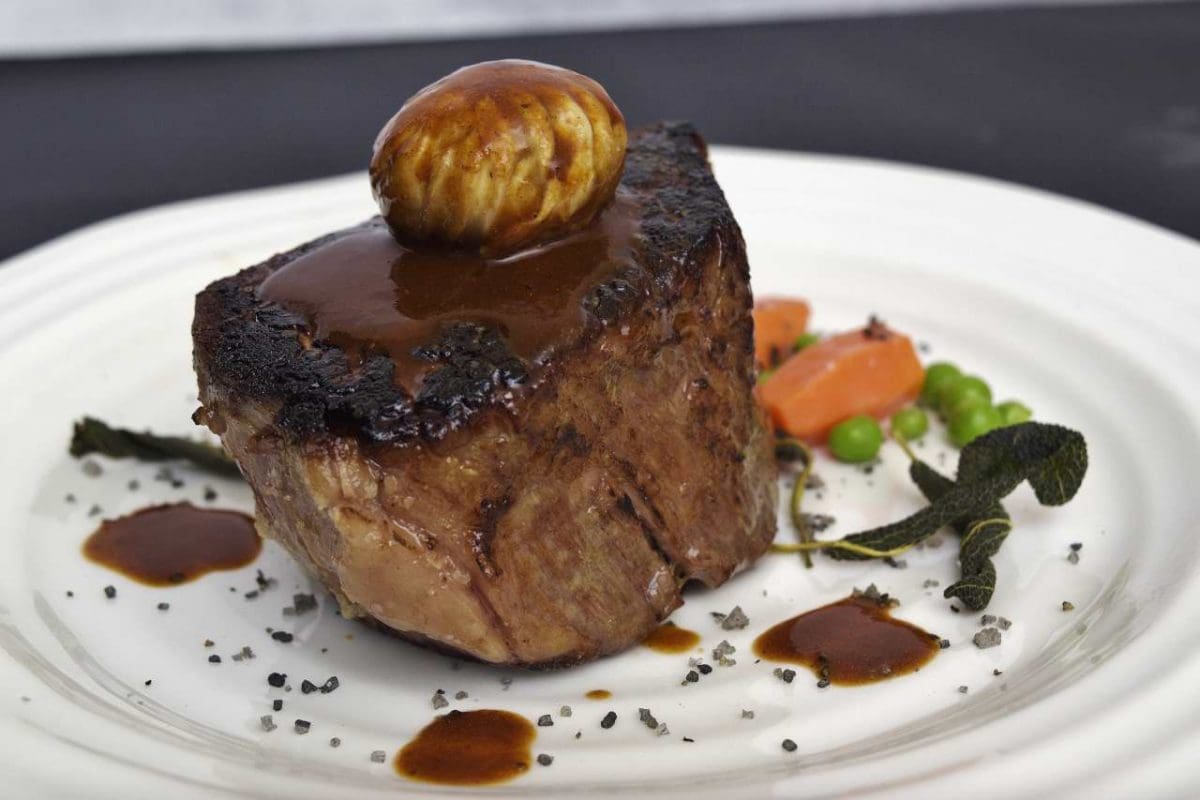
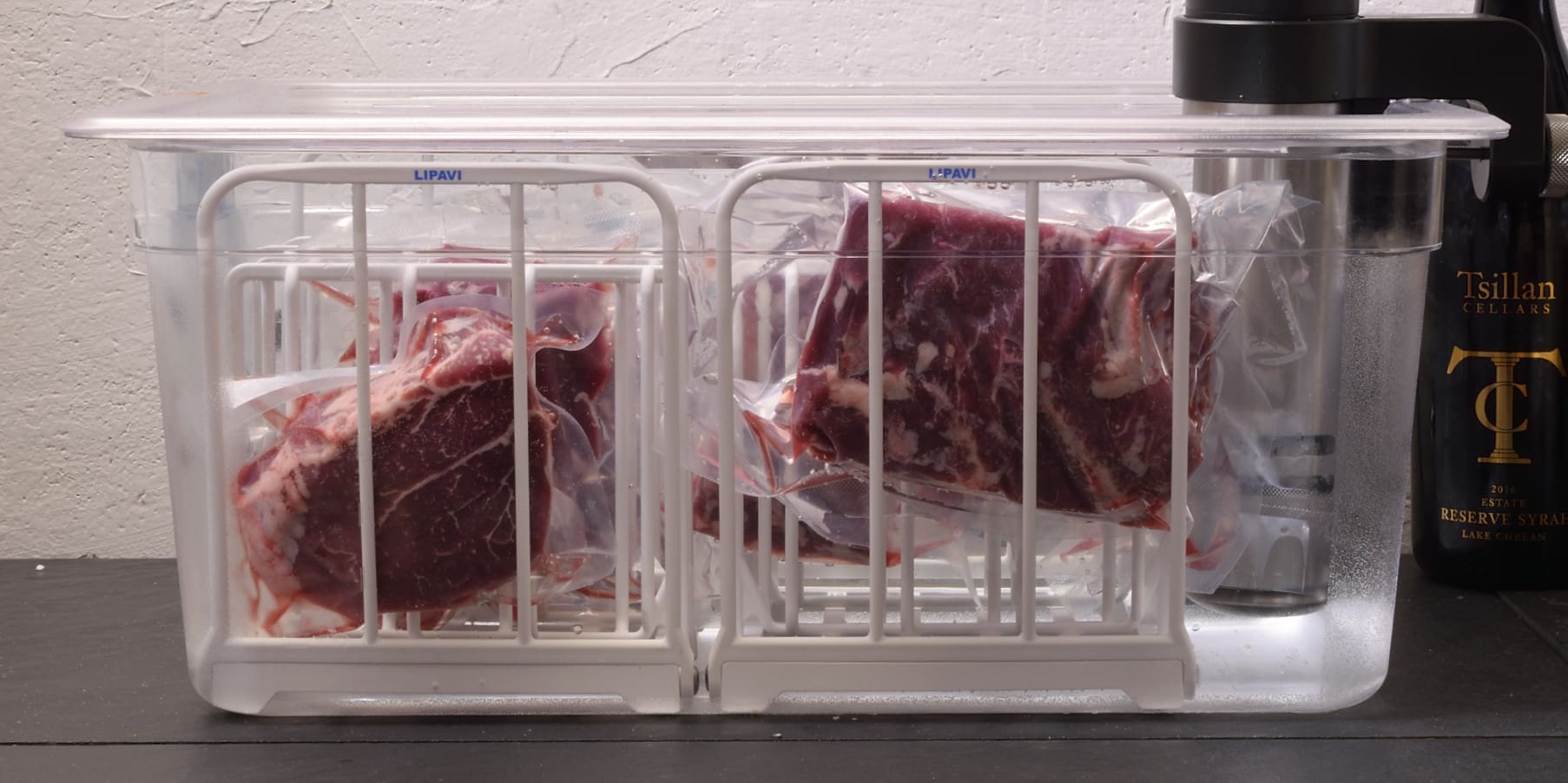
Wow, amazing blog format! How lengthy have you ever been blogging
for? you make running a blog look easy. The whole glance of your site is wonderful,
as neatly as the content! You can see similar here sklep online
Good day! Do you know if they make any plugins to assist with Search Engine
Optimization? I’m trying to get my blog to rank for some targeted keywords but I’m
not seeing very good gains. If you know of any please share.
Cheers! You can read similar text here: Auto Approve List